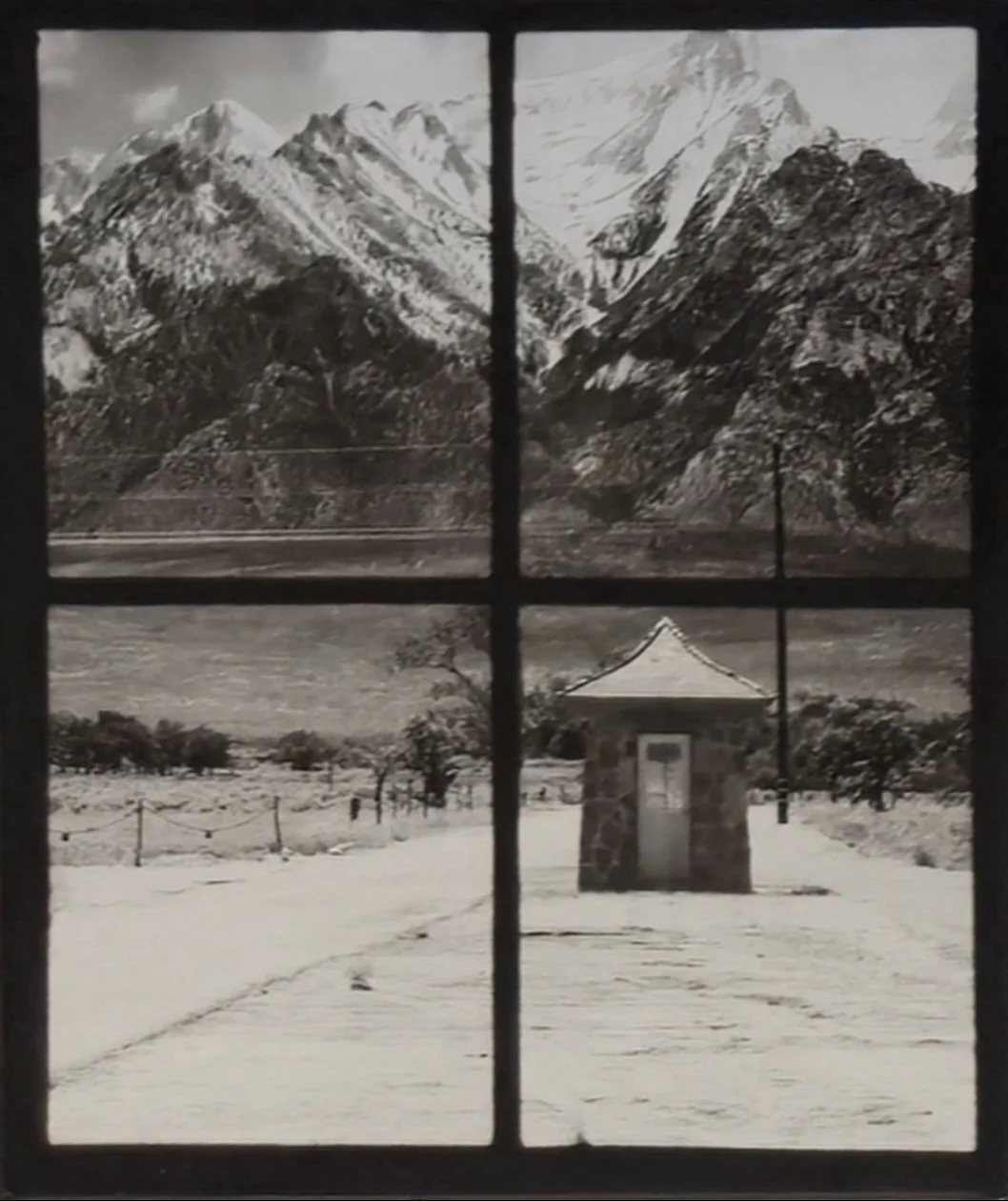Beth Shibata artwork at the Armstrong Theater
PADA member Beth Shibata has two images showing in the foyer of the Armstrong Theater in Torrance, California. Her work is part of an art show and concert being organized to raise funds for the construction of a planned World War II Camp Wall Monument in Columbia Park, Torrance. The World War II Camp Wall organization and the City of Torrance are organizing the fund raiser, which features a concert by Dan & June Kuramoto and Kimo Cornwell at the Armstrong Theater on the evening of Oct. 15, 2025. The Camp Wall Monument will be a series of walls in Columbia Park listing the names of everyone the U.S. government unjustly incarcerated in the WWII era. The art is related to the concentration camp experience. The work went up the first week of September and will come down the week before Thanksgiving.
The Armstrong Theater is located at 3330 Civic Center Dr, Torrance, CA 90503. Access to the foyer may require permission from the theater box office. Box office hours from are Tuesday - Friday, 1-8pm, Saturday 12-4pm.
Manzanar Free Press, Vol. 16 No. 7, Last Issue by Beth Shibata, pigment on canvas/mixed media, 24” x 20”
The Manzanar Free Press was the government sanctioned Wartime Relocation Authority’s news outlet at Manzanar. It ran from April 1942 until November 1945 and provided inmates with bulletins, information about local events such as births, deaths, baseball game results, and the availability of items at the camp. Any stories that characterized opinions, complaints or could spark dissent or civil unrest were suppressed. Its final issues carried classified ads and stories about inmates successfully relocating. Its final issue was published October 19, 1945; a month before the camp permanently closed on November 21, 1945.
Guarding Ghosts by Beth Shibata, pigment on canvas, 20” by 24”
This is the view from the first Sentry Gate entering Manzanar War Relocation Center that greeted some 10,000 people of Japanese ancestry who would be incarcerated for the next three years. The site opened on March 22, 1942 as the Owens Valley Reception Center but was taken over by the War Relocation Authority on June 1, 1942, becoming the first of ten facilities across the West and Southwest to incarcerate people of Japanese ancestry during World War 2.


